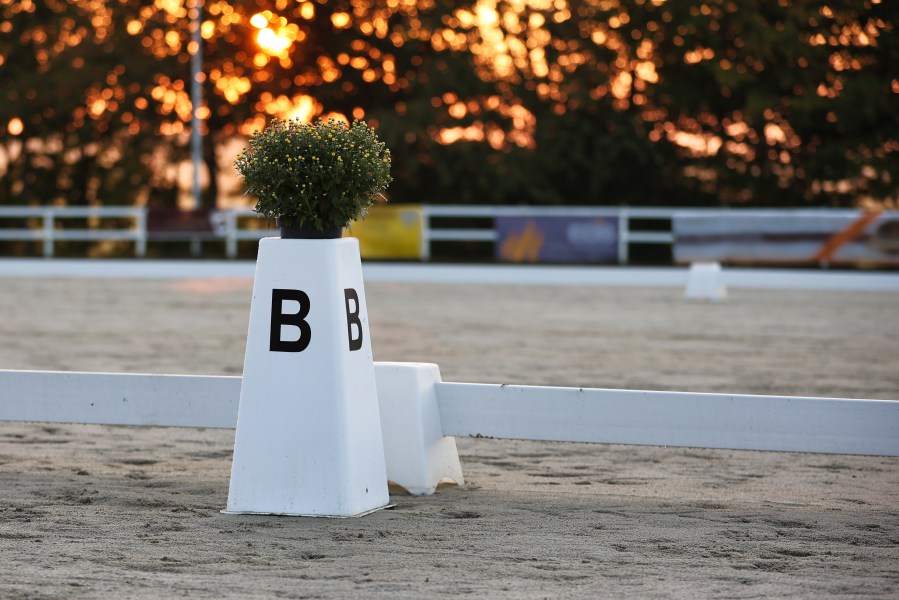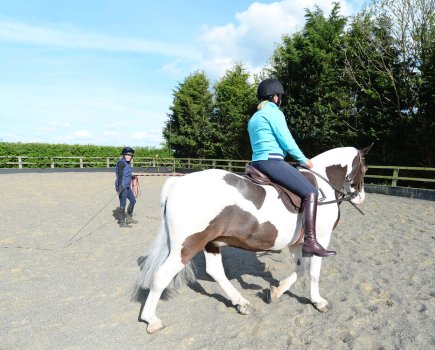Free walk on a long rein is included in dressage tests up to medium level, so it’s likely that you’ll come across it and be asked to do it when you’re competing. This flatwork movement can also earn double marks (up to 20) on a test sheet, so it’s worth taking the time to get it right.
Even if you don’t compete in dressage, being able to ride a good free walk is important for you and your horse. It’s a useful part of warming up and down for any discipline, and can encourage and allow your horse to stretch and relax when out hacking.
What is the judge looking for?
“The judge wants to see your horse lengthening his frame with a relaxed and supple swing over his back,” explains dressage judge and trainer Alex Gingell.
When executed correctly, in free walk the horse’s hind foot should clearly over-track the footfall of the front leg, plus there should be a lowering and stretching of their head and neck.
‘Over-track’ means the hind foot lands slightly in front of where the front foot landed, rather than stepping into the same footprint.
“Compare this footfall to the medium walk, where your horse remains on a contact and his hind feed land in the hoof print left by his front feet — it’s quite different,” adds Alex.
How to ride free walk
- Practise at home by making free walk a regular part of your daily riding sessions, whether you are schooling, hacking or doing something else.
- Let your reins slip through your hands, but still keep some contact, at the marker specified in your test.
- Encourage a longer stride from your horse through your seat.
- Look up, breathe and allow your centre of gravity to drop.
- Your horse should lower and stretch his head and neck forward, as well as down and out.
- Use your lower leg to encourage your horse to march out, and take longer steps.
- Allow your body to move in time with the horse’s walk steps.
- Your horse should look mentally and physically relaxed during this movement.
- Try not to over-ride this movement, as you risk your horse jogging and lifting his head up.
Common errors to avoid
The judge doesn’t want to see:
- The rider throwing the contact away — ie dropping the reins and losing the contact completely, rather than letting them slip out gradually.
- A change in the walk rhythm — the length of stride should increase, but the tempo (speed) shouldn’t increase.
- Hollowing or resisting of your horse in the contact.
- No difference shown between free walk and medium walk — there should be a clear transition and difference between the two.
In the image above, the horse needs to learn to take its head and neck lower and its nose forward in order to be in free walk. This will partly come when the rider adopts a more forward, softer hand so that the reins become longer and allow the horse to take the contact down and forward. They can then work towards the step lengths increasing so that over-track begins to happen.
Meet the expert: Alex Gingell is a British Dressage list 4 judge and trainer. He and his wife Jayne founded and run Hack Up, an award-winning bespoke supplement company for horses.
Lead image by Shutterstock









